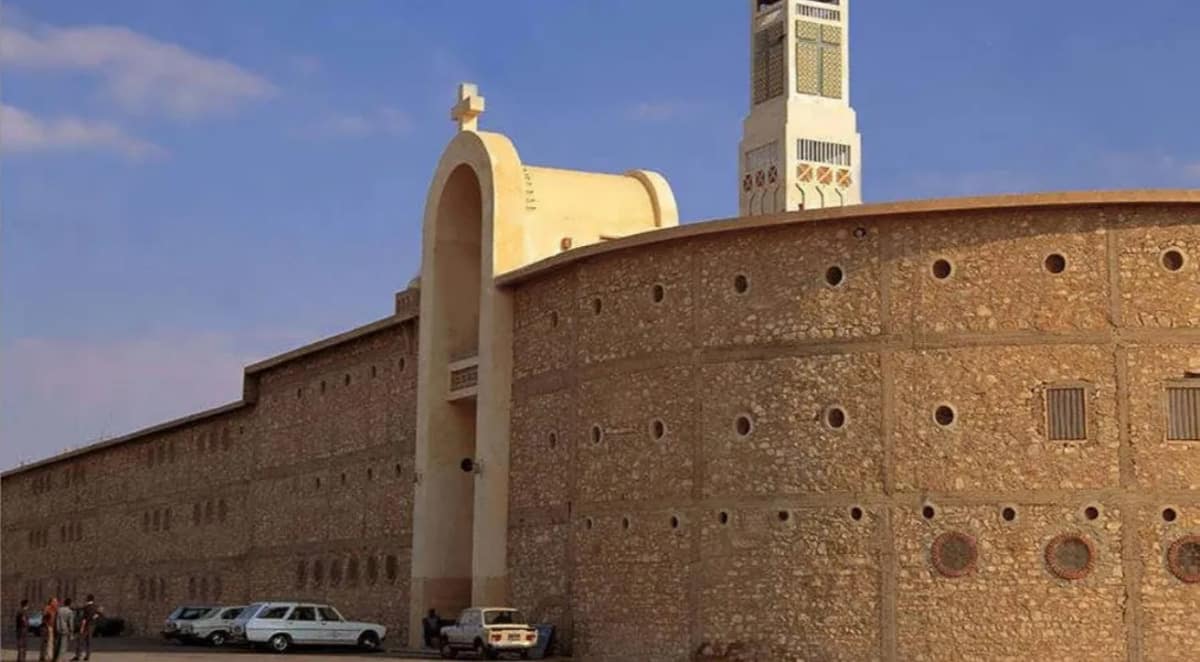Monastery of Saint Macarius is unique among the distinguished archaeological monasteries, because it is distinguished by the diversity and method of ancient monasticism, as it does not have technology options, or the ability to design an advanced city.
In this article, we will uncover for you the Monastery of Saint Macarius with Top Ten Egypt
It is called “Deir El-Nagout” because all researchers and priests find it carved in the rock by the hands of monks since football, and visitors seeking monasticism come to it. It is also considered a religious and tourist attraction and its doors are open to many people from inside and outside Egypt.
Who is Saint Macarius the Great?
Saint Macarius was born in a village called Shabshir in the center of Menoufia in Egypt around the year 300 AD. He was called the Egyptian because he was from the territory of Egypt, which is present-day Memphis or Giza. He was raised in piety and acquired a sensitive sense of sin.
Historical background Of Monastery of Saint Macarius:
Saint Macarius founded a monastery that bears his name, the Monastery of Saint Macarius the Great, which has been continuously inhabited by monks since its founding in the fourth century.
Architecture of the monastery:
The area of the main buildings of the Monastery of Anba Makar is less than two acres, while the total area of the monastery is 2,700 acres. That is, approximately 11,340,000 square meters. It has a rectangular shape.
The monastery is divided internally into two almost equal parts by a group of buildings, with the general direction from east to west. The northern section has a quadrilateral shape and includes an open courtyard with a well in the middle.
The eastern and northern sides of the courtyard are bordered by two rows of cells and the Church of St. Makar. The Hospitality Palace was also built to the east, along with a modern row of cells. As for the west of the courtyard, there is the church of the forty-nine martyrs of the sheikhs of Shehit, and next to it there is a room or frying pan known as the chrism fryer, in which chrism oil was cooked in the past. In the southern part of the monastery, the fort appears, and at the bottom of its southern wall there is a cemetery for monks called the Tafos. On its northern side, there is the Abbaskhayron Church, and to the west, there is the dining room.
Monastery churches:
The monastery contains seven churches: the Church of Anba Makar, the Church of Aba Skhayron, the Church of the Elders, the Church of the Virgin, the Church of Sawah, the Church of St. Anthony, and the Church of the Angel Michael.
The Monastery of St. Macarius, like any ancient structure, requires consistent care to combat the effects of time and the elements. Delve into specific restoration projects that have breathed new life into the monastery.
In the grand tapestry of Egypt’s historical wonders, the Monastery of St. Macarius the Great stands as a luminous thread, weaving stories of faith, resilience, and the enduring spirit of a nation. May its walls continue to whisper secrets of the past to those who listen, and may its future be as timeless as the sands that cradle its sacred grounds.
Browse our complete list of Egypt tours Click Here



Comment (0)